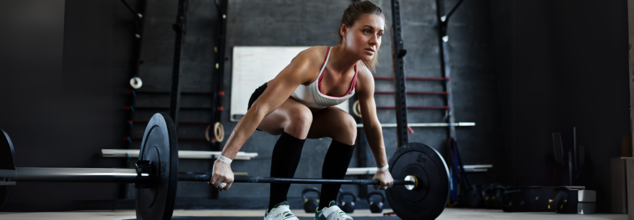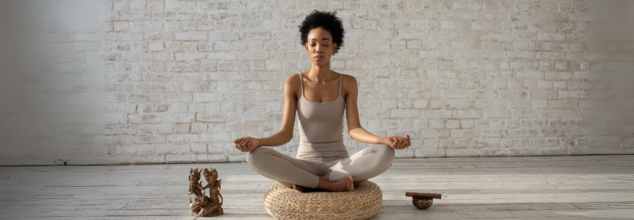
Credit: Canva
How 'Weekend Warrior' Workouts Can Jumpstart Your Fitness Goals
Struggling to fit workouts into your busy weekday schedule? You’re not alone—and health experts say the “weekend warrior” approach might still offer significant benefits for your body and brain.
The Centers for Disease Control and Prevention (CDC) recommends that adults engage in at least 150 minutes of moderate-intensity physical activity each week. For some, that means carving out 30 minutes a day from Monday to Friday. But for others balancing packed schedules filled with work, commuting, childcare, or studies, daily workouts can feel nearly impossible.
Enter the weekend warrior: someone who concentrates most, if not all, of their exercise into one or two days—typically over the weekend. Whether it’s a long hike, a pickup game of soccer, or an intense gym session, these bursts of activity may be just as effective as spreading exercise throughout the week.
“Getting at least 150 minutes of physical activity per week is broadly associated with improved health and lower risk of disease,” said Dr. Shaan Khurshid, a cardiac electrophysiologist at Massachusetts General Hospital. His research suggests that even when physical activity is concentrated on the weekend, the benefits are comparable to more regular patterns.
In fact, studies show that weekend warriors enjoy many of the same health perks as those who exercise more routinely. From better heart health to lower risks of chronic conditions, this pattern appears to support overall wellbeing. Khurshid’s most recent findings indicate that both weekend and regular exercisers had reduced risks for over 200 diseases.
And it’s not just physical health. A 2024 study published in the British Journal of Sports Medicine found that weekend warriors had a significantly lower risk of developing neurological and mental health conditions like dementia, Parkinson’s disease, depression, and anxiety—compared to those who exercised less than 150 minutes per week.
So, how can people make the most of their weekend workouts? Experts offer a few practical tips:
Build a routine that works for you. “It’s about doing the best you can in a way that’s fun and exciting,” said Dr. Brad Donohue, a psychology professor and sports performance expert. Whether it’s playing sports, taking a dance class, or going for a long walk—what matters is finding joy in the activity.
Listen to your body. While weekend workouts can be intense, it’s important not to overdo it. Khurshid advises ramping up activity gradually and paying attention to how your body responds.
Make it social. Getting family and friends involved not only makes exercise more enjoyable but can also increase motivation and consistency, Donohue noted.
Focus on the experience, not the outcome. Fixating on results—like losing weight or hitting a personal best—can lead to frustration or burnout. Instead, celebrate progress and stay present in the moment.
Stay mindful of sedentary time. Even active individuals can be at risk if they sit for long hours. Minimizing inactivity during the week is crucial for long-term heart health, Khurshid emphasized.

(Credit-Canva)
Explainer: Why Do Heavy Lifters Use Smelling Salts Before Big Lifts?
Videos of heavy lifters often go viral on social media; the sheer power and endurance is not something people can achieve easily. One thing that a lot of them do before they proceed with the lift is smell something and immediately go in for the lift. Those are smelling salts. Smelling salts are products that have a strong ammonia smell and have been used to wake people up after they faint. Lately, some athletes have become interested in using them to feel more alert and perform better. However, do they actually work? Another thing to consider is how something that has such an immediate effect on a person can be safe.
How do Smelling Salts Affect Someone?
According to the National Capital Poison Centre the ammonia that these salts contain has a pungent smell that can cause irritation to the lungs. It can also lead to changes in the breathing patterns. This change in breathing causes people who have fainted to become conscious. These have been present since the 13th century to treat lightheadedness and fainting. The strong odor temporarily increases the heart rate of a person and blood flows to the brain. These symptoms remain for about 15 seconds after inhalation and then subside withing a minute or so. So why do lifters use it when they are fully conscious and do not need to be more alert?
Why Do Gym-Lifters Use Smelling Salts?
Athletes commonly use smelling salts to get a quick boost before or during competitions, hoping it will give them more energy, make them more alert, and speed up their reactions. Unlike many other stimulant drugs, the ammonia in smelling salts is allowed by the World Anti-Doping Agency. You'll often see powerlifters using them, especially right before their final lift, the deadlift. The International Powerlifting Federation even lets athletes inhale ammonia as long as they do it privately. However, even though athletes might feel like smelling salt improves their performance but there is no evidence of it. According to a British Journal of Sports Medicine 2006 article, there's no real proof that they actually make them stronger or more powerful. In the past, smelling salts were sometimes used to treat athletes with minor head injuries, but they probably didn't actually help in those situations.
Smelling Salts Can Go Badly For Anyone
Smelling salts haven't been studied well for use as performance-enhancing supplements, and they aren't approved by the government as stimulant drugs.
The US Food and Drug Association has even warned people about using certain smelling salts that were being advertised to make people more alert and give them energy, even though they hadn't been approved for these uses. They had also received reports of people having problems like shortness of breath, seizures, migraines, vomiting, diarrhea, and fainting after using these products.
National Capital Poison Control provided an example of a female powerlifter who had used smelling salts right before competing. After inhaling, she developed severe symptoms like a runny nose, eye redness, dizziness and a headache. These symptoms got worse over the hour leaving her gasping for air. It was later diagnosed that she was allergic to smelling salts and was treated as such.
Note: If you are thinking about using smelling salts, it's best to talk to a doctor first to see if they are right for you. They can also tell you how often you can use them, if at all, and which products might be best. Keep in mind that smelling salts are not a good idea for everyone. For example, if you have conditions like asthma, allergies, bronchitis, emphysema, or other lung problems, smelling salts might not be safe for you.

Credit: Canva
These 7 Yoga Poses Can Boost Stamina In Runners
While yoga and running are two different forms of exercise, yoga can be a game-changer for runners, helping to improve flexibility, build strength, and prevent injury. Certain poses are especially beneficial for runners, offering both preparation before a run and recovery afterwards. Whether you are a marathon runner or a casual jogger, incorporating these poses in your routine can prove to be beneficial.
1. Bhujangasana (Cobra Pose)
Cobra Pose is a great way to stretch and strengthen the lower back and core. To perform this pose, lie on your stomach with your palms placed under your shoulders. Inhale as you lift your upper body off the mat, keeping your lower ribs grounded. Maintain a neutral neck and gaze down. Exhale to lower your body back down. This posture helps to open up the chest and strengthen the spine, which is essential for a runner’s posture.
2. Uthith Dwipadasana (Both Legs Raised Pose)
This pose targets your core muscles, helping to stabilize and support your running form. Lie on your back and, on an inhale, raise both legs to about one and a half feet off the floor. Exhale and lower your legs to hover just three inches above the ground. You can alternate between lowering and raising your legs in this position. This movement activates the abdominal muscles, improving balance and endurance.
3. Utkatasana (Chair Pose)
Chair Pose is fantastic for building lower body strength, particularly in the quads, hamstrings, and glutes, which are all critical for running power. Stand with feet hip-width apart, hands extended forward at shoulder level. Inhale and raise your heels off the ground, then squat down, keeping your back straight and thighs parallel to the floor. Hold the position for as long as possible while breathing normally. This pose helps improve stamina and balance, both key elements for runners.4. Chalit Naukasana (Boat Pose Variation)
A variation of the traditional Boat Pose, this exercise engages the core and helps to increase flexibility and stability. Lie on your stomach and extend your arms in front. Lift both your arms and legs off the floor, creating a see-saw motion as you sway up and down, alternating between lifting your hands and legs. This dynamic movement strengthens the core and improves overall balance, which is essential for maintaining a steady running stride.
5. Chalit Pavanmuktasana (Wind-Releasing Pose Variation)
This variation of the Wind-Releasing Pose is excellent for releasing tension in the lower back and hips. Lie on your back, inhale, and lift both legs in the air. Exhale, grabbing your legs with your hands and pulling them gently toward your chest. Perform a gentle swaying motion to further release tightness and improve circulation in the lower body. This pose aids in digestion and can help prevent post-run muscle stiffness.
6. Viprit Paschimottanasana (Reverse Seated Forward Bend)
This pose opens the chest and stretches the hamstrings, providing a counter-stretch after a run. Sit with your legs extended in front and place your palms on the ground behind you. Inhale as you lift your hips toward the ceiling, keeping your palms and heels grounded to support the lift. This pose strengthens the arms, shoulders, and core while stretching the entire posterior chain, which is especially beneficial for post-run recovery.
7. Shavasana (Corpse Pose)
Shavasana, or Corpse Pose, is the ultimate recovery pose. Lie on your back with your legs extended and arms at your sides. Close your eyes and focus on your breath, allowing your body to relax completely. Shavasana helps to reduce stress, lower the heart rate, and promote a sense of calm—essential for optimal recovery.

(Credit-Canva)
Feeling Anxious? Here’s 20 Minute Yoga Routine That Can Help You Feel Grounded
While many people may not know, yoga benefits both mind and body wellness. It helps us center ourselves and keep us in sync with our mind and body. Many studies have shown that yoga has a positive effect on mental health issues like depression, mood swings and anxiety. A 2018 review published in the Depression and Anxiety journal explained that yoga can be a safe and effective intervention for individuals with elevated anxiety levels.
Another 2018 study done by the International Journal of Preventive Medicine, showed that 52 women who had participated in the study experienced decreased levels of stress and anxiety after just 12 sessions of regular hatha yoga practice. Here are some grounding yoga exercises that can help you feel better in just 20 minutes
Reclining Twist (Supta Matsyendrasana)
Lie on your back and hug your knees to your chest. Then, gently lower both knees to one side, keeping your shoulders flat on the floor. Extend your arms out to the sides. This gentle twist helps your body relax and can calm your nervous system as you feel supported by the ground. Breathe slowly here.
Cat and Cow (Marjaryasana and Bitilasana)
Start on your hands and knees. As you breathe out, round your back like a cat, letting your head hang. As you breathe in, arch your back and lift your chest and gaze gently. This flowing movement connects your breath with your body, helping to quiet your mind and ease tension. Repeat slowly.
Child’s Pose (Balasana)
From hands and knees, bring your big toes together and widen your knees slightly. Sit your hips back towards your heels and fold your upper body forward, resting your forehead on the floor. Let your arms extend forward or rest alongside your body. This pose encourages stillness and helps release tension in your body.
Downward-Facing Dog Pose (Adho Mukha Svanasana)
From hands and knees, lift your hips up and back, forming an upside-down V-shape. Keep your knees slightly bent at first. Press firmly into your hands and feet, stretching your whole body. Focus on your breath and notice any tension you might be holding. This pose directs your attention inward.
Standing Forward Bend (Uttanasana)
Stand with your feet hip-width apart. Gently bend your knees and fold forward from your hips, letting your head hang heavy. You can hold onto opposite elbows or let your hands rest on the floor or blocks. This stretch helps release tension in your lower body and can help you tune into your inner feelings.
Mountain Pose (Tadasana)
Stand tall with your feet together or hip-width apart and your arms relaxed by your sides, palms facing forward. Imagine a gentle lift from the crown of your head. This pose might look simple, but it helps you find balance and awareness throughout your entire body. Notice where you might be holding tension and try to release it.
Wide-Legged Standing Forward Bend (Prasarita Padottanasana)
Stand with your feet wide apart, facing the long edge of your mat. Hinge forward from your hips, bringing your hands to the floor or blocks beneath your shoulders. Let your head hang and feel the stretch in your legs. Notice where you can relax in your upper body as your lower body works to balance you.
Easy Seat (Sukhasana)
Sit comfortably cross-legged on the floor. You can use a cushion or block under your hips for more support. Rest your hands gently on your knees or in your lap. Allow your eyes to close and bring your attention to your breath. This simple seated pose helps you feel any subtle shifts in your body and energy after your practice.
© 2024 Bennett, Coleman & Company Limited

